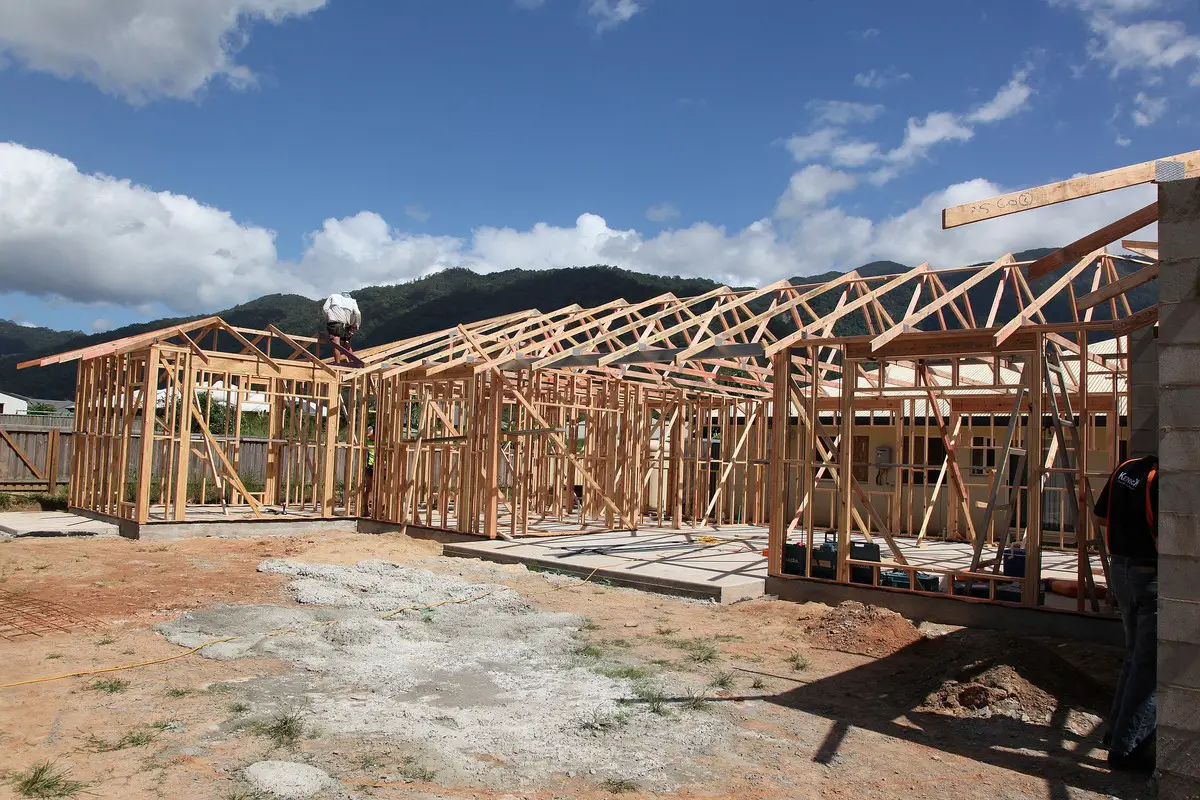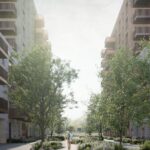Wasteful steel-and-glass buildings fuel global climate injustice, Bath Architecture News
Wasteful steel-and-glass buildings fuel global climate injustice
15 October 2021
Location: University of Bath, southwest England, UK
‘Wasteful steel-and-glass buildings fuel global climate injustice’ – climate expert calls on construction industry to consider environmental impacts of new projects as a moral imperative
University of Bath Professor of Zero Carbon Design David Coley calls for new ways of thinking about construction in essay co-authored with John Cryer MP for All-Party Parliamentary Climate Change Group
- New essay titled ‘Are buildings evil?’ states high-carbon buildings are morally indefensible, and could even be considered racist, given impacts are more likely to be felt in the global south
- The report highlights need to reframe as indefensible the widespread usage of materials and design features that do not drastically lower energy usage and carbon emissions
- Government must incentivise zero-carbon building, and efforts must be made to educate and shift public opinion toward zero-energy projects
Architects, contractors, planners and construction clients must consider building projects from a moral standpoint based on their lifetime carbon impact, a leading design and climate expert has suggested.
Timber frame building construction:
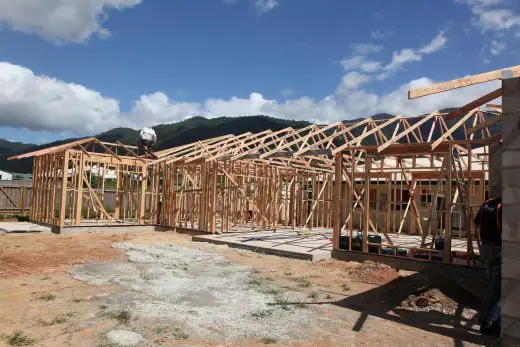
Wasteful steel-and-glass buildings fuelling climate injustice
David Coley, Professor of Zero Carbon Design at the University of Bath, encourages a new way of thinking about construction, stressing the undesirable nature of wasteful or energy-intensive development, in a new essay titled ‘Are buildings evil? Rethinking responsibility in the construction industry’.
In it, he argues that the government must support developers in reducing emissions by providing incentives and tax relief for zero-energy building, and that we must look at our buildings as harmful emitters. Given that a disproportionate amount of this harm, in the form of rising sea levels and temperatures too high to farm crops, will fall on the non-white population of the global south, he argues that designing and constructing energy-intensive buildings fuels global climate injustice and is therefore morally offensive, and potentially a form of unconscious institutional racism.
Co-authored with John Cryer MP, the essay is part of the Net Zero Exchanges collection published by the All-Party Parliamentary Climate Change Group and Policy Connect, which brings together academics and politicians to explore pressing issues related to the UK’s global climate commitments in the run-up to the COP26 conference.
Reshaping public opinion on wasteful development is key
With the UK committed to achieving net zero emissions by 2050, Professor Coley highlights that while construction accounts for 40 per cent of all carbon emissions in industrialised nations such as the UKdecades of work to decarbonise the industry have proven relatively ineffective. Therefore, he says, efforts need to be repositioned to draw a link between sustainability, desirability and moral values.
Prof Coley explains: “We urgently need to rethink our approach to construction and adopt zero-energy practices. The largest proportion of our carbon emissions come from our buildings, not industry or transport, as is often assumed. We know how to build, and have built, some exemplary low-energy buildings, so our failure to adopt them as the norm can be viewed as deliberate.
“Highlighting the link between emissions and buildings is key to putting sustainability at the heart of architecture and design. This comes down to what our values really are, and how we develop innovative future designs that are both impressive but also zero-energy.
“In short, rather than seeing low-energy design as an engineering issue, we need to focus on the truth – it is a moral issue. If we can do this, architects will naturally design sustainable buildings and developers will insist on them, in part to protect their investment. Once energy use and carbon emissions are linked to morality and aesthetics, they become reputational and legacy issues, not engineering ones.”
The report proposes reviewing the use of common design elements including high levels of glazing and excessive use of steel and concrete; and increasing renewable energy generation from buildings (by using PV solar cells, for example).
Prof Coley also points to research showing that even triple-glazed windows lose 10 times the heat a well-insulated wall of the same area does. He estimates a large building walled entirely with double-glazed windows could ‘leak’ as much energy overnight, when not even in use, as the average daily consumption of 1,500 UK homes.
Reframing unnecessary energy usage as particularly unappealing is key to creating this new way of thinking, Prof Coley says. He explains: “Deep changes in society are often triggered by a popular movement or demand, and public opinion has the power to force developers to prioritise sustainability. We need the public to demand zero-energy buildings, developers to set zero-energy briefs and architects to draw zero-energy buildings – and all because they find anything else unacceptable, even repulsive.”
Call for incentives for zero-energy buildings
The authors argue that the government needs to support developers to reach these goals by offering tax relief on zero-energy buildings and providing financial incentives for new-builds reaching Passivhaus accreditation standards. Passivhaus buildings require very low levels of energy to operate and heat, bringing environmental benefits as well as reducing running costs.
The All-Party Parliamentary Climate Change Group works in parliament with the purpose of advancing understanding of policy issues surrounding climate change and enabling cross-party discussion and action on climate policy.
Policy Connect is a membership-based, not-for-profit, cross-party think tank. You can download and read the essay at: https://www.policyconnect.org.uk/research/net-zero-exchanges-connecting-policy-and-research-climate-action
University of Bath
The University of Bath is one of the UK’s leading universities both in terms of research and our reputation for excellence in teaching, learning and graduate prospects.
The University is rated Gold in the Teaching Excellence Framework (TEF), the Government’s assessment of teaching quality in universities, meaning its teaching is of the highest quality in the UK.
In the Research Excellence Framework (REF) 2014 research assessment 87 per cent of our research was defined as ‘world-leading’ or ‘internationally excellent’. From developing fuel-efficient cars of the future, to identifying infectious diseases more quickly, or working to improve the lives of female farmers in West Africa, research from Bath is making a difference around the world. Find out more: http://www.bath.ac.uk/topics/research/
Well established as a nurturing environment for enterprising minds, Bath is ranked highly in all national league tables. We are ranked 8th in the UK by The Guardian University Guide 2022, 9th in The Times & Sunday Times Good University Guide 2022 and 10th in the Complete University Guide 2022. Our sports offering was rated as being in the world’s top 10 in the QS World University Rankings by Subject in 2021.
Previously on e-architect
University of Bath Posts
Changing the shape of floors could cut concrete usage by 75 percent
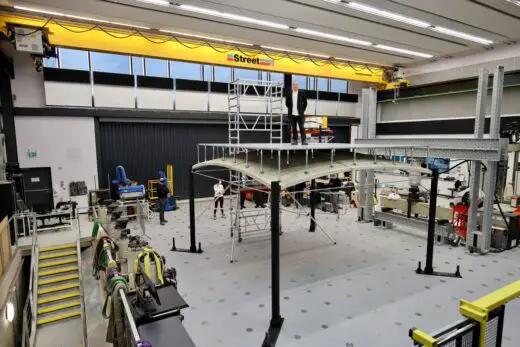
image courtesy of the University of Bath
New vaulted style of floor cuts concrete usage
Parallel (of Life and) Architecture – Bath Exhibition
Contemporary reflections on the ideas and impact of Alison and Peter Smithson
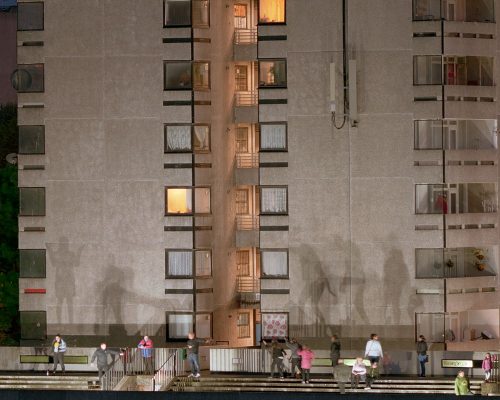
image : Simon Terrill, Crowd Theory Thamesmead, 155x250cm, 2017, detail 2
Parallel (of Life and) Architecture – Bath Exhibition
Location: Bath, south west England, UK
University of Bath Buildings
Key University of Bath Architecture
Bath arts complex – ICIA
Design: McInnes Usher McKnight Architects
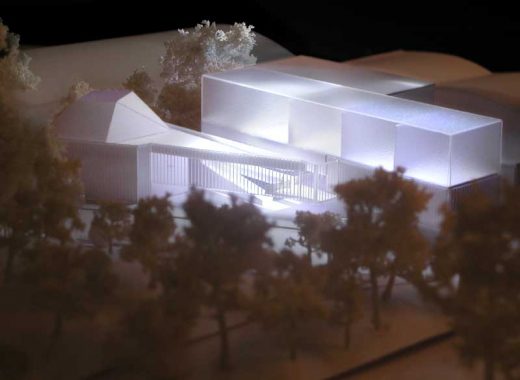
image courtesy of architects practice
Bath University Arts Complex
University of Bath – Centre for the Arts, Claverton Down campus
Design: Feilden Clegg Bradley Studios
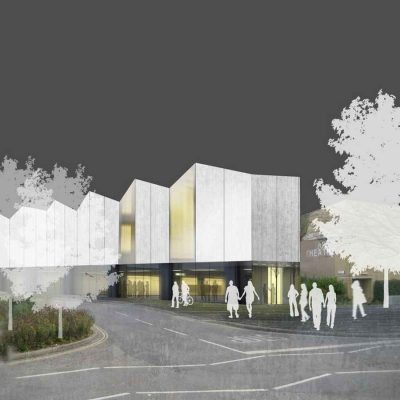
image courtesy of architecture practice
Centre for the Arts at University of Bath
The Edge, arts and management building
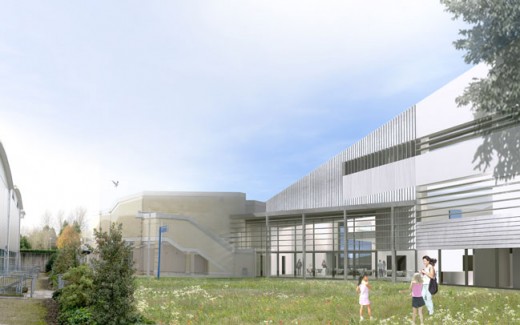
image courtesy of architects studio
The Edge at the University of Bath
Bath Architecture
Key Buildings in Bath – selection:
The Royal High School Bath
Feilden Clegg Bradley Studios
Royal High School Bath
The Dyson Centre for Neonatal Care
Feilden Clegg Bradley Studios
The Dyson Centre for Neonatal Care Bath
Bath Spa development
Grimshaw Architects
Thermae Bath Spa
Circle Bath – Centre of Clinical Excellence
Foster + Partners
Circle Bath
Holburne Museum of Art
Eric Parry Architects
Holburne Museum of Art building
James Dyson Design School
Wilkinson Eyre
Dyson School of Design Innovation
Bath Architectural Heritage Debate : Speakers incl. Eric Parry + Sir Richard MacCormac
English Architectural Designs
Comments / photos for the Wasteful steel-and-glass buildings fuel global climate injustice page welcome

